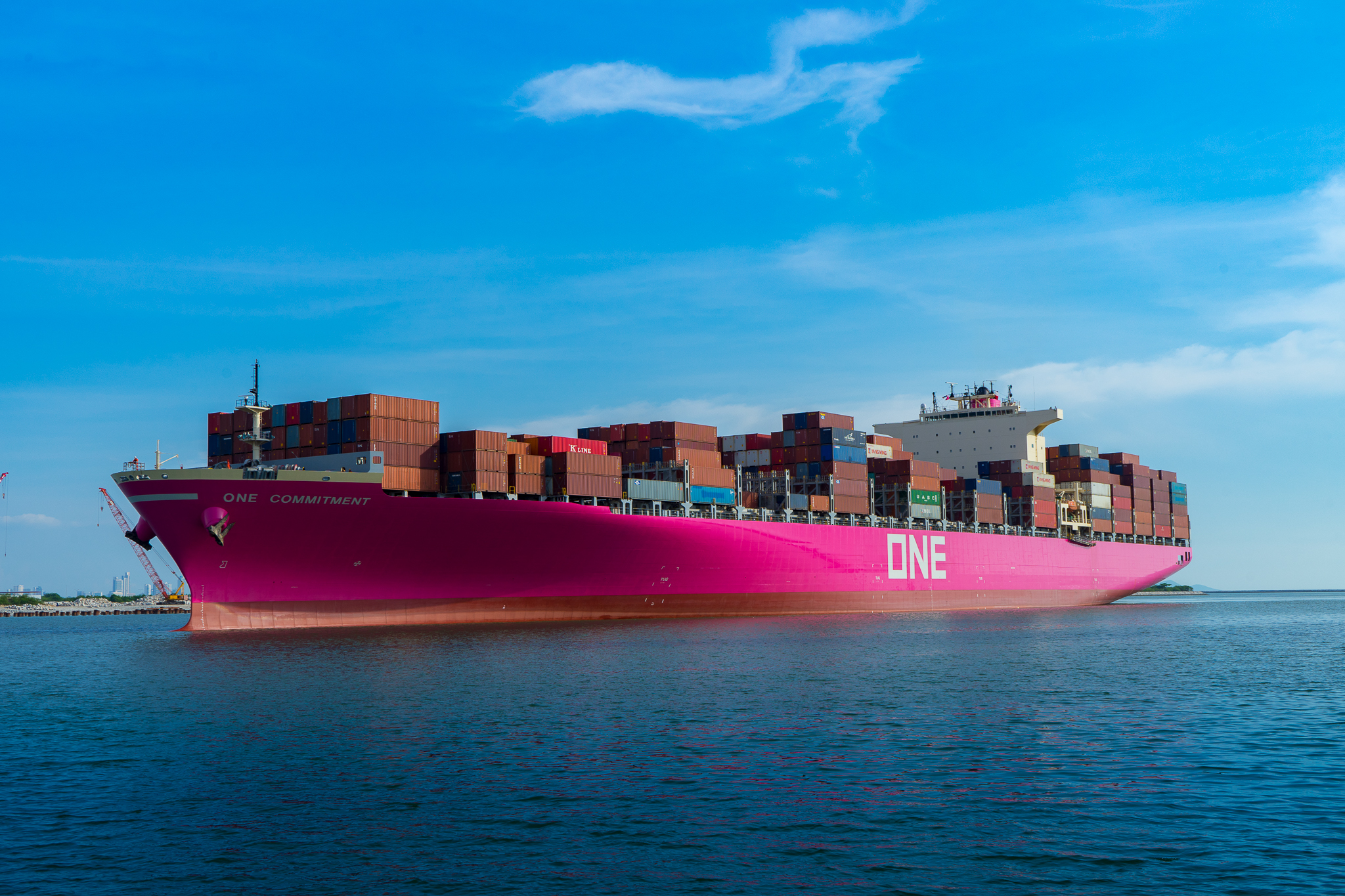ONE Expects Deeper Loss amid Teething Problems
Newly-launched Ocean Network Express (ONE) expects to report much wider loss than previously estimated, the company said in a downgraded business forecast for the first half and full year.
Specifically, for the first half of the fiscal year 2018, covering the period from April to September 2018, ONE expects its loss to reach USD 310 million, much wider than USD 38 million previously forecast.
The liner company said that it has already factored in the impact of the U.S.-China trade friction in its second half outlook to a certain degree.
For the full fiscal year, covering the period from April 2018 to March 2019, the company anticipates to book a loss of USD 600 million, a major downgrade from the expected profit of USD 110 million.
The main reason affecting the business performance of the company is the drop in liftings and utilization, driven by the impact of teething problems that emerged immediately after the commencement of services in April this year.
ONE explained that the teething problems relate to booking reception and documentation operations which had been delayed because “ONE staff were not completely familiarized with the newly introduced IT system, and the staff were shorthanded. This caused significant inconvenience for customers. “
“ONE sought to regain lost ground during the peak season from July to September, but liftings and utilization remained lower than the outlook because the negative impact remained on its main Asia-North America routes and Intra-Asia routes,” ONE further noted.
The consolidated container business of the Japanese trio, NYK, MOL, and K-Line, pointed out that the teething problems regarding ONE’s services have already been resolved.
Vinalines Cut Debt by USD 440 Mn from 2014 to 2017
Vietnam National Shipping Lines (Vinalines) managed to reduce its debt by VND 10.6 trillion (USD 440 million) during the period between 2014 and 2017.
This was announced by Le Quang Trung, the company’s vice general director, during the presentation of Vinalines’ financial results for the first nine months of 2018.
From January to September 2018, the company posted a profit of VND 21 billion and a revenue of VND 11.7 billion, achieving 86.1% of the strategic goals set for 2018.
During the nine-month period, the shipping firm handled 62.93 million tons of cargo at domestic ports and transported another 18.66 million, equivalent to 64.1% and 86.9% of the annual plan, respectively.
In the third quarter, Vinalines launched an initial public offering (IPO), raising VND 54.3 billion. As explained, the proceeds were modest when compared to the company’s expectations of at least VND 4.89 trillion.
Vinalines offered 488.82 million shares in the IPO at a starting price of VND 10,000 apiece. Following the IPO, the state will hold 65% of charter capital, while 2% of charter capital will be sold at a preferential price for VNL employees and trade union.
The company intends to become a joint stock company by the end of this year.
Vinalines’ fleet currently comprises containerships, bulkers, and tankers.
Transport ministry wants to raise seaport service fees
The Ministry of Transport is considering an increase to seaport service charges in a bid to attract more private logistics infrastructure investments.
Minister of Transport Nguyen Van Cong said many of Viet Nam’s seaport service fees remain lower than fees in the region’s other countries, making potential private investors hesitant to fund new seaport construction projects.
Cong used container loading and unloading charges as an example.
This fee is set at US$30 per container in Hai Phong, $45 in Da Nang and $41 in HCM City.
The same fee is $65 in Cambodia, $52 in Malaysia and $130 in Hong Kong.
Cong said passenger service fees should also be increased. The fee for each passenger is just $0.90-1.10, far lower than the $8 charged in Singapore and $14 in Hong Kong.
Cong pointed out that these low charges mean many of Viet Nam’s seaports run at a loss, making it difficult to attract private investors.
According to Trinh The Cuong of the Viet Nam Marine Administration, a proposal is being drafted to replace Ministry of Transport decree No 3863. The new draft will include two options for fee increases to bring the country closer to regional standards.
The first option would set passenger service charges between $2.50 and $5. Loading and unloading fees would see a 10 per cent rise, from $30 to $33 for 20-foot containers.
The second option would put passenger fees at a minimum of $5 and a maximum of $15. Loading charges would first rise 10 per cent in 2019 before seeing 10 per cent rises again in 2020 and 2030. This would bring loading fees to a final rate of $41 for 20-foot containers.
The ministry said it will submit the draft by the end of the month.
Representatives from Hai Phong, Da Nang and Chan May ports, meeting at a recent workshop, agreed passenger charges should increase to $15.
According to Cong, the higher fees would not translate to higher prices for consumers because the increases are already included in transport charges paid to logistics firms.
Cong also said it is necessary to improve transport infrastructure to reduce logistics costs. Viet Nam’s logistics costs remain high, accounting for 20.9 per cent of GDP. This is higher than China’s 19 per cent, Thailand’s 18 per cent and Japan’s 11 per cent.
Cong pointed out the underdeveloped nature of the country’s transport infrastructure. Viet Nam needs to connect production zones to seaports and airports, he said. In addition, the shortage of large-scale centres for circulating goods drives up logistics costs.
Source: World Maritime News, Vietnam Shipping Gazette

.png)







.jpg)


